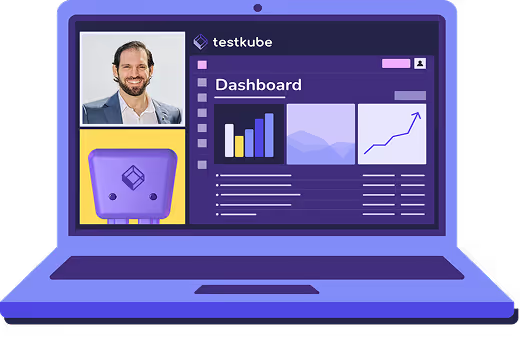Table of Contents
What Does QA Tools Mean?
QA tools, or quality assurance tools, are designed to verify that new software meets project requirements and delivers a consistent, error-free user experience. They help teams manage, automate, and monitor different types of testing, from functional and API to performance and regression.
By using QA tools, organizations can improve reliability, reduce manual effort, and identify issues before software reaches production.
Why It Matters
Quality assurance is a critical part of modern software delivery. Without effective QA tools, teams struggle to maintain consistency, scalability, and release velocity.
QA tools provide the structure and automation necessary to:
- Detect defects early in the development cycle
- Validate functionality across browsers, devices, and APIs
- Automate repetitive testing tasks for faster feedback
- Monitor performance and user experience at scale
- Enable continuous testing and delivery across teams
How It Works
QA tools perform specific functions across the software testing lifecycle. They may automate test execution, simulate real-world user interactions, analyze performance, or integrate with CI/CD pipelines for continuous validation.
When unified through a platform like Testkube, QA tools can be executed in a scalable, containerized environment, allowing teams to centralize control, results, and observability across test frameworks.
Key Categories and Examples
1. Test Management and Automation
Plan, manage, and automate test suites.
Examples: TestRail, Ranorex, Test Studio (Telerik), Katalon, Cucumber.
2. Cloud-Based Testing
Run tests on multiple browsers and devices in parallel.
Examples: LambdaTest, BrowserStack.
3. Web Testing
Validate web application functionality and end-to-end user flows.
Examples: Cypress.io, Selenium, Taiko, Protractor.
4. API Testing
Verify API behavior, performance, and reliability.
Examples: Postman, SoapUI, Testsigma.
5. Performance Testing
Assess responsiveness and stability under load.
Examples: Apache JMeter, k6.
6. AI-Powered QA Tools
Use machine learning and natural language to create and maintain tests.
Examples: testRigor, qodo, Testsigma.
7. Other Notable Tools
Enhance specific QA tasks.
Examples: BugBug, Jest, Storybook, Parasoft, Jira (for issue tracking).
Key Benefits
- Automates and accelerates the QA process
- Reduces manual testing effort
- Improves collaboration between QA and development teams
- Provides early and reliable feedback on code quality
- Integrates easily with CI/CD and DevOps pipelines
How It Relates to Testkube
Most QA tools operate in isolation, which makes scaling and managing test execution complex. Testkube brings these tools together under a single, Kubernetes-native control plane.
- Unified Orchestration: Run Cypress, Postman, JMeter, and other QA tools in the same Kubernetes environment.
- Cross-Environment Consistency: Eliminate flakiness by running identical tests across local, staging, and production clusters.
- Scalable Execution: Distribute QA workloads across clusters and parallelize test runs for faster validation.
- Centralized Observability: Consolidate test results, logs, and metrics in one dashboard for full visibility.
- AI Integration: Through its Model Context Protocol (MCP) Server, Testkube enables AI agents to create, optimize, and execute QA workflows autonomously.
Testkube does not replace QA tools. It extends their power by orchestrating them in Kubernetes, transforming fragmented testing into a unified, scalable, and automated quality assurance system.
Best Practices
- Combine functional, performance, and API testing for comprehensive coverage
- Containerize QA tools to ensure consistent execution across environments
- Integrate QA automation into your CI/CD process
- Use Testkube to centralize execution and reporting for all QA frameworks
- Monitor test results over time to identify recurring issues and performance trends
Common Pitfalls
- Relying on separate tools without orchestration creates inefficiency
- Overloading CI/CD pipelines with complex test suites slows releases
- Inconsistent environments lead to flaky or unreliable test results
- Limited visibility across frameworks makes debugging difficult
- Failing to adopt scalable execution frameworks restricts QA velocity
Frequently Asked Questions (FAQs)
What are QA tools used for?
They automate and manage software validation to ensure applications meet quality and performance standards.
How does Testkube fit into QA workflows?
Testkube runs existing QA tools inside Kubernetes, providing orchestration, scalability, and unified observability across test frameworks.
Why run QA tools inside Kubernetes?
It improves scalability, eliminates environment drift, and allows teams to reuse existing infrastructure efficiently.
Does Testkube support AI-based QA tools?
Yes. Testkube integrates with AI-powered frameworks and agents, allowing continuous and autonomous quality validation through its MCP Server.


